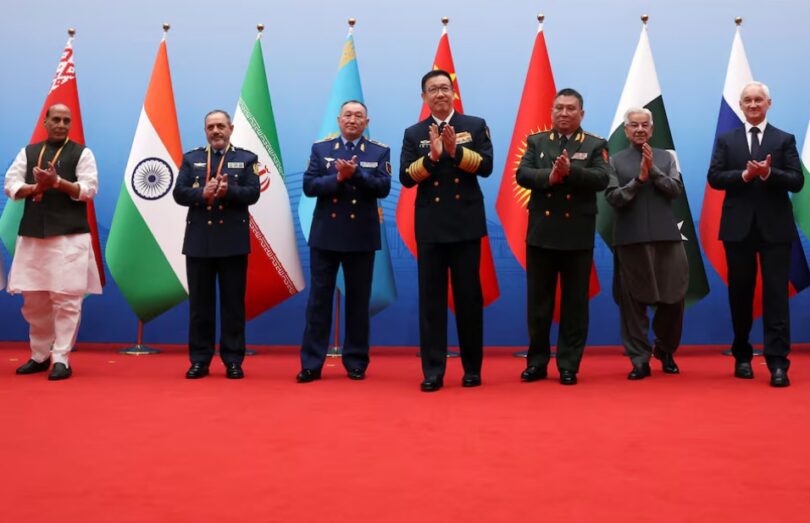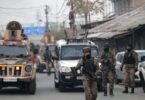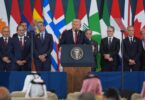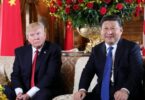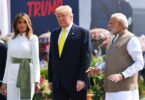There is extraordinary excitement in the media about the emerging India-China bonhomie; accelerated by Donald Trump’s tariff terrorism – 50% tariffs on India and more to come if India continues to buy Russian products, including oil. This, while Russia-US trade has grown by 20% in Trump’s second presidency. August 27 is the deadline given by Trump to impose 50% tariffs on India and no fresh date has been given for India-US trade talks.
Trump’s tariffs have given a big boost to BRICS. Interestingly, a USD 2 billion equivalent loan in Yuan has been disbursed to Australia by BRICS – a historic first. India has granted full INR access to BRICS. It remains to be seen whether Trump, bent upon invading India’s farm sector and with his growing passion for Pakistan, will continue to double down on India or go TACO.

The next Shanghai Cooperation Organization (SCO) Heads of State Summit is scheduled to be held in Tianjin, China from Aug 31 to Sep 01. Prime minister Narendra Modi is scheduled to attend the same. This would be Modi’s first visit to China after the Chinese incursions in eastern Ladakh in 2020, including the Galwan clash. According to the media, Russian President Vladimir Putin will be visiting India this month and both Modi and Putin will then travel to Tianjin for the SCO Summit – would they travel to China in the same aircraft? A Modi-Xi in-person meeting on the sidelines can be expected. Whether there will also be a Putin-Modi-Xi Summit under the Russia-India-China (RIC) banner remains to be seen. But should this happen, it would be an appropriately strong signal to Trump who is trying to draw a wedge between Russia and China (which won’t work) and threatening India with tariffs while bending backwards to China on the same issue; contrary to advice from within the US.
The Kailash-Mansarovar Yatra, a significant pilgrimage for Hindus, Buddhists and Jains, has been restarted, although a PLA establishment in proximity of Lake Mansarovar came up a few years back. India and China have also resumed tourist visas after a five-year gap, and there's been a revival of business relations, with Indian diesel cargo being shipped to China for the first time in over three years. Direct flights between India and China are to resume in September 2025. Opening of border trade would be the next logical step. However, border settlement and de-induction are vexed issues, which need to be examined in the context of what China has made repeatedly clear notwithstanding what the spin doctors would paint in the Indian media.
China wants the border issue kept separate from progressing India-China bilateral relations. China has been salami-slicing Indian territory wherever it wants, including in Ladakh and Arunachal Pradesh. Indian politicians have been denying territorial losses behind the cover that the Line of Actual Control (LAC) is not demarcated on ground. One example is Union Minister Kirin Rijiju denying in Parliament any loss of territory in Arunachal Pradesh. But in 2019, BJP MP from Arunachal Pradesh had told Parliament that China has intruded 50-60 km inside Arunachal Pradesh (https://www.newindianexpress.com/nation/2019/Nov/19/china-has-occupied-50-60-km-of-indian-territory-says-bjp-mp-tapir-gao-2063963.html). The hype over possible border settlement with China, must acknowledge that if there will be a border settlement at all, it would be on China’s terms, with China holding all the aces. Moreover, to expect China to give up its territorial hunger would be naïve. China’s communication network (including high-speed railway) and the second expressway (G695) through Aksai Chin that would touch Galwan, Hot Springs and Pangong Tso by 20235 is indication enough.
As for deinduction of forces, this will remain a chimera under the garb of peace and tranquillity to be maintained in border areas. But the PLA is consolidating its new positions, supported by tunnels, enhanced ISR, fire support and logistics. The new bridge over Pangong Tso enables quick induction of mechanized forces. The Pentagon report ‘Military and Security Developments Involving the People's Republic of China 2024’ published in December 2024, confirmed three new missile silo fields deep inside China that contain 320 silos for ICBMs, plus China is likely doubling DF-5 liquid-propellant ICBM numbers to 50 silos. The US expects the DF-41 ICBM to be deployed in silos and on railways, in addition to known road- mobile launchers. In addition, China is keeping some nuclear forces for launch on warning.
Xi would have unlikely forgotten that during his first visit to India, anti-China Tibetan protests were organized outside Hyderabad House, at New Delhi where he was having discussions with Modi. Also, Modi has been publicly saying he will show “Lal Ankh” (Red Eye) to China. The media blitz about Xi losing his hold in China is similar to the noise made in 2022-2023 of Putin losing hold in Russia. But theoretically supposing Xi is deposed (chances of which are negligible), do we expect China to disintegrate? And, what is the guarantee that Xi’s successor will not have a harsher view of a China-led Asia?
China has been arming Pakistan over the decades, helped Pakistan go nuclear with the US presenting the Nelson’s Eye, and helped the Pakistani military during Operation ‘Sindoor’, including sharing intelligence about movement of Indian Air Force (IAF) aircraft. The Vice Chief of Indian Army publicly disclosed China’s support to Pakistan in this operation but NSA Ajit Doval and Defence Minister Rajnath Singh didn’t raise this issue during their visits to China.
Pakistan’s prime minister Shehbaz Sharif, attending the SCO Summit in Tianjin, is being accompanied by army chief Asim Munir. According to media reports, Munir will be addressing all the defence attaches posted in China – an unprecedented step if true. Pakistani army officers have been posted in Chinese military establishments since the past several years. Post Munir’s second visit to the US, Pakistan is reportedly seeking to upgrade its air force with advanced US military platforms, including F-16 Block 70 jets, AIM-7 Sparrow missiles, air defence systems, and HIMARS rocket launchers. Interestingly, an unexploded Chinese air-to-air PL-15 missile fired by Pakistan during Operation ‘Sindoor’ has been dissected by the Japanese, technology of which would have been shared with the US. With Pakistan getting both American and Chinese weapon platforms, sharing technology could become a business.
By courting Asim Munir if Trump is hoping to wean Pakistan away from China, but Afghanistan, Pakistan, and China are convening in Kabul on August 20 for a high-level trilateral meeting; bringing together Chinese Foreign Minister Wang Yi, Pakistan’s Deputy Prime Minister and Foreign Minister Ishaq Dar, and Afghanistan’s Acting Foreign Minister Amir Khan Muttaqi. The discussions are expected to focus on enhancing counterterrorism cooperation and exploring the inclusion of Afghanistan in the China–Pakistan Economic Corridor (CPEC). This will mark the 6th trilateral dialogue between the foreign ministers of the three nations. Following informal talks in Beijing in May 2024, the 5th trilateral dialogue was held in Islamabad in May 2023. After the trilateral in Kabul, Wang Yi will travel to Pakistan for a Pakistan-China dialogue on August 20-21.
Finally, dealing with China will not be easy for India, given the China-Pakistan-Bangladesh nexus and Chinese influence in Nepal. It will require pragmatism, take a long-term view and give up unwanted hype and political statements.
The author is an Indian Army veteran. Views expressed are personal.


